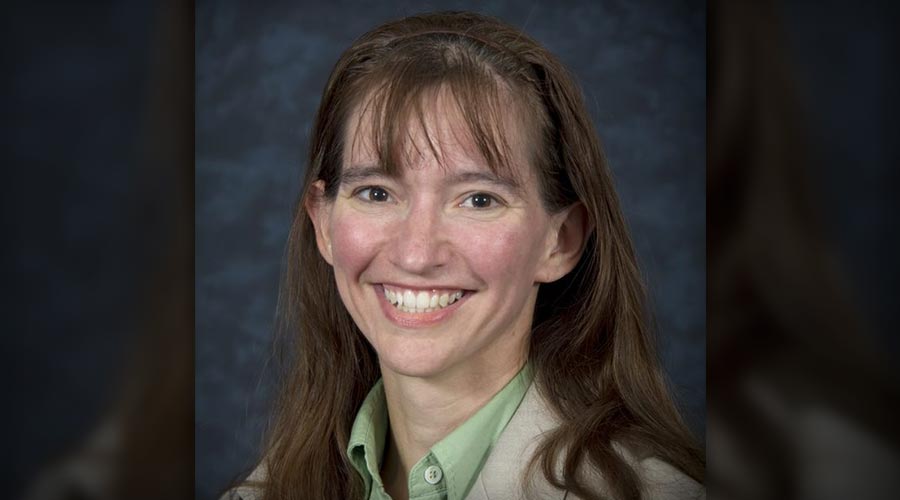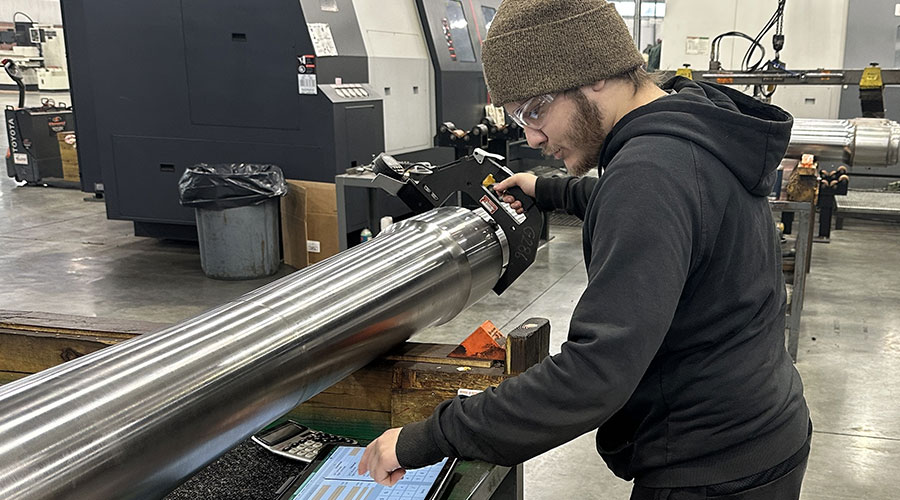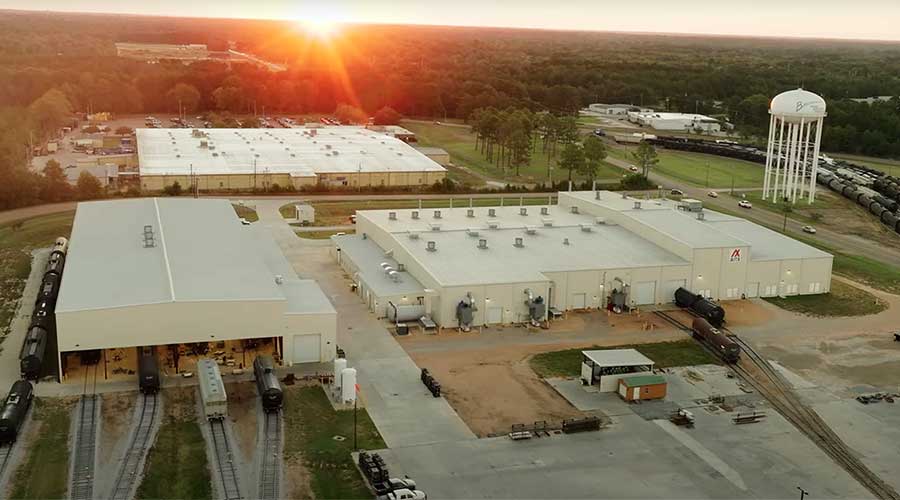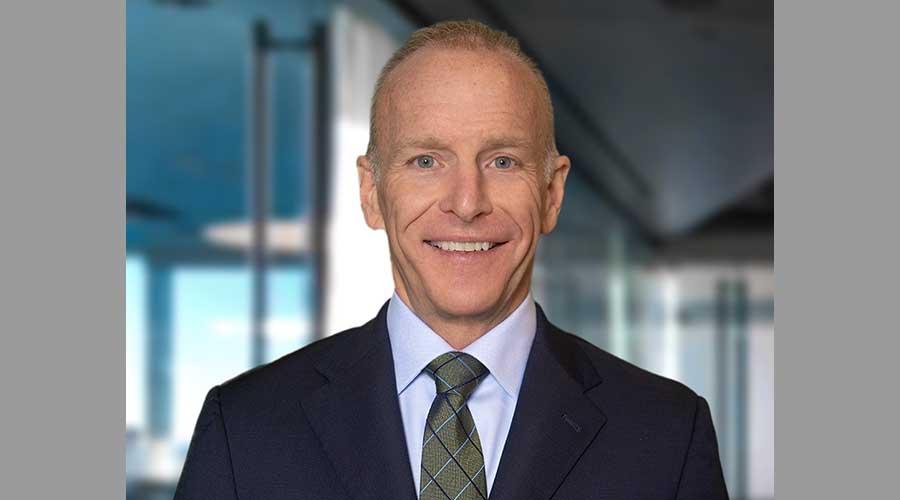Stay updated on news, articles and information for the rail industry
April 2007
Rail News: Mechanical
Waiving the way to ECP implementation
By Pat Foran, Editor
Wherever it’s been tried, electronically controlled pneumatic (ECP) braking technology for the most part has worked, and worked beautifully. But the obstacles facing implementation in the U.S. rail realm — for awhile, it was interoperability issues, then a transceiver-chip problem, as well as an ever-present cost issue (as in who’s paying for the technology and actually benefiting from it) — prompted developers of the technology to target marketplaces in other countries.
But ECP finally will be coming to a railroad near you, or at least one that’s on the same continent. And possibly later this year.
Last month, the Federal Railroad Administration (FRA) granted a request from BNSF Railway Co. and Norfolk Southern Railway for a waiver from certain federal regulations that would permit the Class Is to start a pilot project using ECP brakes.
The waiver gives the railroads the opportunity to review ECP’s potential for improved braking and shorter stopping distances that may improve railroad and public safety, network capacity, asset utilization, fuel savings and equipment maintenance.
“It is time for the railroad industry to embrace new train braking technology and prevent some of the accidents that are happening now,” said FRA Administrator Joseph Boardman in a March 29 prepared statement. “Rail safety can be improved and better brakes are part of the solution.”
An important step
It’s also time for forward-thinking railroads and private car owners to embrace a technology that can help them reach their increasingly aggressive productivity goals, particularly as rail network capacity concerns linger.
“This is an important step by the FRA toward proving the economic viability and safety benefits of ECP brakes,” says Bryan McLaughlin, manager of AAR systems engineering for ECP supplier New York Air Brake Corp. (NYAB). “This waiver will allow us to get started.”
The U.S. ECP tide began to turn in 2005, when the FRA commissioned consulting firm Booz Allen Hamilton to study the benefits and costs of the technology for the U.S. freight rail industry.
Issued in May 2006, the study findings concluded ECP brakes were a “tested technology” that offer “major benefits,” such as in train handling and car maintenance, fuel savings and network capacity, and also could “significantly enhance” rail safety.
Buoyed by the results, FRA in August 2006 announced plans to rewrite federal safety rules governing the installation of ECP brakes, adding that it would issue a notice of proposed rulemaking in 2007 to revise federal brake system safety standards and encourage railroads to deploy ECP brake technology.
“It won’t be simple — and it won’t be cheap,” says FRA Deputy Administrator Cliff Eby, estimating that the cost to ECP-equip all cars and locomotives will be about $6 billion. “But I am convinced that it will be worth it.”
Officials from BNSF and NS are, too. In November 2006, the railroads jointly asked FRA for a waiver of compliance from a series of safety standards so that the roads could initiate ECP pilot train operations “on an expedited basis.”
Implementing ECP would require a capital commitment of $1 million per train, the railroads said.
On March 21, FRA granted the request — with conditions. The five-year waiver applies specifically to air brake inspections covered under 49 CFR Part 232, “Brake System Safety Standards for Freight and Other Non-Passenger Trains and Equipment.” Under the waiver, trains equipped with ECP brakes will be able to travel up to 3,500 miles without stopping to undergo certain routine brake inspections.
“In the current regulation, it’s 1,000 miles and, in some instances, 1,500 miles. So this is very significant,” says Tim Heilig, NS’ vice president-mechanical.
Conditional love
The railroads didn’t get everything they asked for. BNSF/NS had sought a waiver to perform daily inspections of ECP locomotives in service on ECP trains. Trip inspections, the railroads said, should be performed instead. Ultimately, FRA denied the railroads’ request but invited them to “present alternatives for handling defects that are found during these inspections when performed en route on ECP brake-equipped trains.”
In all, FRA placed 25 conditions on the waiver, including ones that require BNSF and NS to “clearly define” a process for handling brake problems discovered en route; ensure that ECP brake inspections be performed by “qualified” individuals; and provide appropriate training to crew members.
The safeguards will generate “extensive data” that could be used in developing a proposed rule, FRA said.
The conditions didn’t significantly alter either railroads’ plans. BNSF still plans to test ECP brakes on its intermodal fleet, especially trains moving international traffic to and from San Pedro Bay, Calif., ports.
“The idea is to have one or two or three train sets that would run back and forth from Long Beach-Los Angeles to our logistics park” near Joliet, Ill., says BNSF VP of Transportation Dave Dealy. “We’ll probably start off with 35 well cars.”
The Class I also is pursing a partnership with a major coal customer to integrate the technology into one of the longest distance coal routes in the country — likely, from the Powder River Basin (Gillette, Wyo.) to Memphis, Tenn., where BNSF interchanges with NS, and then on to just south of Atlanta. It’ll take between six and nine months for BNSF to put an ECP-equipped train in revenue service, Dealy says.
Savings expected
NS plans to equip 30 4,000-horsepower GE Evolution Series locomotives and 400 FreightCar America Inc. AutoFlood IIITM rapid-discharge coal cars with ECP brakes later this year; the Class I will use the equipment for dedicated coal train service. NS also is in the process of acquiring 1,300 hybrid coal gons, each of which will accommodate ECP.
“We expect that there are going to be some savings generated, in terms of rail wheel life, and probably improvements in train dynamics, as well as the stress state of the railroad — there’ll be less rail wear,” Heilig says. “This has the potential to actually improve capacity because of the increased stopping distances that you can have with ECP.”
The tests also will help determine how ECP performs in a “real-world environment” and, ultimately, shine a little light on what it would take for the technology to take hold nationwide, said NS VP of Operations Planning and Support Gerhard Thelen in a prepared statement.
First things first, though. The next step is ECP-equipping their fleets.
“I’d like to be able to say we’ll be doing something in June, but how quickly we can obtain the ECP hardware remains to be seen,” says Heilig.
ECP suppliers have been looking forward to meeting U.S. roads’ technology needs for some time now. Given the lack of marketplace momentum in recent years, they’ve essentially had to test and refine — not to mention learn how to collaborate — in other countries. And they’re more than ready to bring it all back home.
For example, Wabtec Railway Electronics L.L.C. and NYAB execs are well aware of railroads’ requirement that ECP suppliers make interoperability a priority. The two suppliers are wrapping up an interoperability test with South African-government-owned Spoornet, which the suppliers have jointly served for years.
“I don’t think interoperability, globally or domestically, will be a barrier moving forward,” says Bob Bourg, VP and general manager of Wabtec Railway Electronics, which has supplied ECP technology to a variety of railroads since the mid-1990s.
More overseas orders
In late 2005, Wabtec obtained a contract to retrofit 50 Spoornet locomotives and 3,300 freight cars with ECP braking and wireline-based distributed power control systems designed to improve train handling and shorten cycle times. Spoornet plans to use the rolling stock on a coal line between Ermelo and Richards Bay.
In 2005, Wabtec also landed a contract from Australia’s Queensland Rail to equip eight locomotives and 296 coal wagons with ECP brakes.
Since then, the railroad’s run more than 180,000 miles without a single train failure due to ECP braking.
“They’ve been very pleased with the equipment,” Bourg says.
NYAB execs report similarly satisfied customers. In 1998, the supplier’s first ECP client — Quebec Cartier Mining Co. (QCM) — began testing NYAB’s EP-60 Stand-Alone ECP brake system on a 20,000-ton, 156-car iron-ore train. Pretty much from the get-go, QCM officials reported improved train handling, lower fuel consumption and increased brake shoe life.
And then there’s Spoornet. Last year, the railroad awarded NYAB a contract to provide computer-controlled and ECP brakes, and distributed power control systems for 110 new locomotives. Under the pact, NYAB will provide an integrated package comprising CCB II computer-controlled brakes, EP-60 ECP brakes and WireDP® distributed power control systems.
NYAB will link the systems to electric locomotives operating on Coal Link, Spoornet’s 408-mile export coal line. The order is a follow-on to one the railroad placed with NYAB and parent Knorr-Bremse in 2005 to retrofit 58 locomotives and 3,000 coal cars with ECP brakes and distributed power control systems.
After surveying Spoornet’s network of feeder mines and evaluating its locomotive fleet, NYAB execs concluded additional engineering applications of ECP technology were needed.
The result? Two new products: the Transition Vehicle, which is designed to enable non-ECP locomotives to haul ECP wagons; and a Trainline Energizing Device (“TED”) that enables ECP wagons to be operated in limited emulation of conventional control.
Both products have applications in other ECP contexts, NYAB’s McLaughlin says.
And the ECP orders keep on coming. In February, NYAB landed a contract with Western Australia iron-ore producer Fortescue Metals Group Ltd. to equip 820 cars with EP-60s. NYAB will supply CCB II brakes integrated with the EP-60 control package and “no wire distributed,” says NYAB Senior Vice President of Marketing and Sales Marshall Beck.
“And like Spoornet, it’s a stand-alone application,” he adds.
It’s all good
But ECP suppliers clearly relish the prospect of seeing their technology in U.S. rail revenue service, something the BNSF-NS waiver now makes possible. The relatively near-future could look even brighter if the FRA issues its notice of proposed rulemaking sometime this summer, as planned.
“All of it has to be viewed as a positive,” says John Anderson, general manager of ZefTron Inc., which offers the ChameleonTM, an ECP/emulation brake system designed to adapt to different train environments by providing a brake valve that emulates conventional and ECP brake systems without overlays.
ZefTron began developing its technology in the mid-1990s. By the early 2000s, Duluth, Missabe & Iron Range Railway Co. and Western Fuels Association Inc. were testing ZefTron’s technology. But when the North American economy slumped in 2001, ZefTron elected to “scale back” in 2002, Anderson says.
“We decided we didn’t have the luxury of putting in more development dollars at that time,” he adds. “But I’m optimistic.”
ZefTron President Richard Murphy is a bit more effusive: “ECP is on everybody’s mind now. “It’s going to happen.”
Which is precisely what Mssrs. Boardman, Dealy, Heilig — and all ECP proponents, really — want to hear. 


 2025 MOW Spending Report: Passenger-rail programs
2025 MOW Spending Report: Passenger-rail programs
 Gardner steps down as Amtrak CEO
Gardner steps down as Amtrak CEO
 Guest comment: Oliver Wyman’s David Hunt
Guest comment: Oliver Wyman’s David Hunt
 Women of Influence in Rail eBook
Women of Influence in Rail eBook
 railPrime
railPrime








